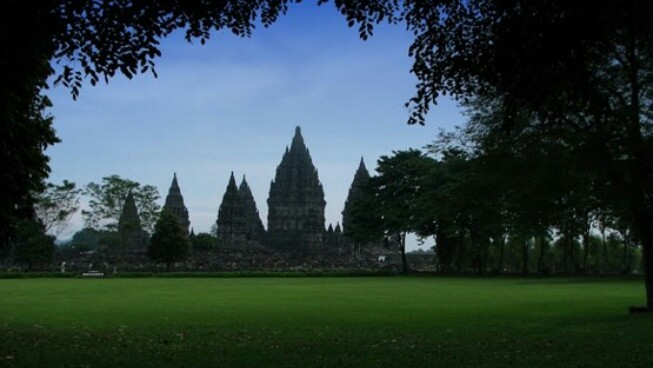Prambanan, Hindu Temple in Indonesia

Candi Prambanan is a 9th-century Hindu temple compound in Central Java, Indonesia, dedicated to the Trimurti, the expression of God as the Creator (Brahma), the Preserver (Vishnu) and the Destroyer (Shiva).
The temple is located 17 kilometres northeast of the city of Yogyakarta on the boundary between Central Java and Yogyakarta provinces. Prambanan temple is the largest Hindu temple site in Indonesia, and one of the biggest in Southeast Asia.
The grandeur, complexity, and integrated architectural concept of Prambanan makes this a truly amazing structure. As a unique cultural and architectural marvel, Prambanan was declared a World Heritage site in 1991 by UNESCO.
A temple was first built at the site around 850 CE by Rakai Pikatan and expanded extensively by King Lokapala and Balitung Maha Sambu the Sanjaya king of the Mataram Kingdom, the temple was built to honor Lord Shiva, and its original name was Shiva-grha (the House of Shiva) or Shiva-laya (the Realm of Shiva).
The temples collapsed during a major earthquake in the 16th century. Although the temple ceased to be an important center of worship, the ruins scattered around the area were still recognizable and known to the local Javanese people in later times. The statues and the ruins became the theme and the inspiration for the Loro Jonggrang folktale.
Excavations by archaeologists in the 1880s facilitated looting. In 1918, the Dutch began reconstruction of the compound and proper restoration only in 1930. Efforts at restoration continue to this day. The reconstruction of the main Shiva temple was completed around 1953 and inaugurated by Sukarno.
To understand a little of Prambanan and to get around all of the temples, you will need to set aside the best part of a full day. The complex opens early at 6 AM so it is no bad thing to stay the night beforehand and get in before the crowds arrive from 9 AM onwards. This would also allow a leisurely return to Yogyakarta or Solo in the mid-afternoon taking in some of the other archaeological sites on the Prambanan plain. This is a wet part of Java and a visit outside of the November to March period has the best chance of providing a clear, sunny day.
Source: wikipedia
Congratulations @erlan91! You have completed some achievement on Steemit and have been rewarded with new badge(s) :
Click on any badge to view your own Board of Honor on SteemitBoard.
For more information about SteemitBoard, click here
If you no longer want to receive notifications, reply to this comment with the word
STOP